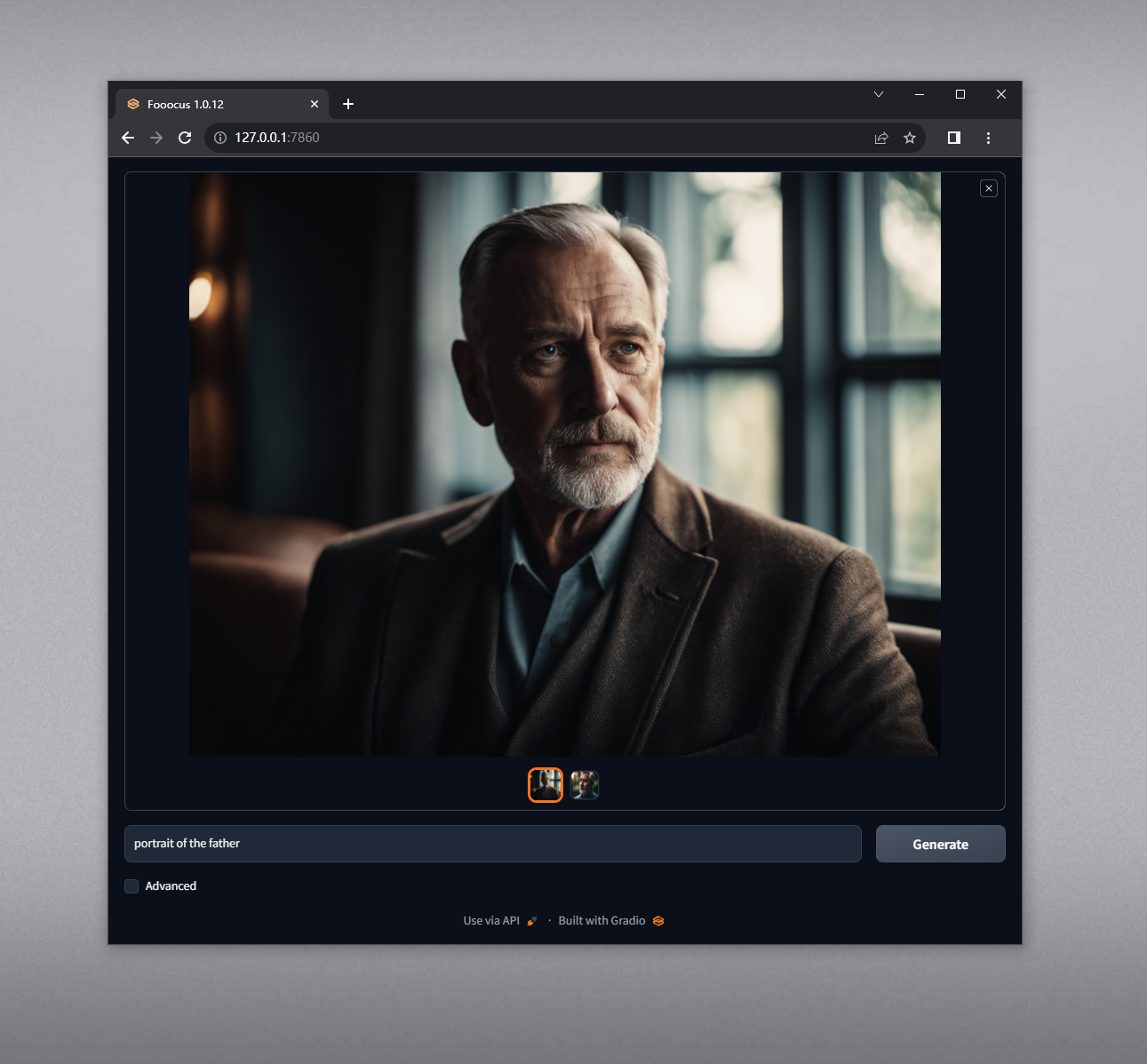Fooocus is an image generating software.
Fooocus is a rethinking of Stable Diffusion and Midjourney’s designs:
-
Learned from Stable Diffusion, the software is offline, open source, and free.
-
Learned from Midjourney, the manual tweaking is not needed, and users only need to focus on the prompts and images.
Fooocus has included and automated lots of inner optimizations and quality improvements. Users can forget all those difficult technical parameters, and just enjoy the interaction between human and computer to "explore new mediums of thought and expanding the imaginative powers of the human species" [1].
Fooocus has simplified the installation. Between pressing "download" and generating the first image, the number of needed mouse clicks is strictly limited to less than 3. Minimal GPU memory requirement is 4GB (Nvidia).
[1] David Holz, 2019.
You can directly download Fooocus with:
>>> Click here to download <<<
After you download the file, please uncompress it, and then run the "run.bat".
In the first time you launch the software, it will automatically download models:
- It will download sd_xl_base_1.0_0.9vae.safetensors from here as the file "Fooocus\models\checkpoints\sd_xl_base_1.0_0.9vae.safetensors".
- It will download sd_xl_refiner_1.0_0.9vae.safetensors from here as the file "Fooocus\models\checkpoints\sd_xl_refiner_1.0_0.9vae.safetensors".
If you already have these files, you can copy them to the above locations to speed up installation.
Below is a test on a relatively low-end laptop with 16GB System RAM and 6GB VRAM (Nvidia 3060 laptop). The speed on this machine is about 1.35 seconds per iteration. Pretty impressive – nowadays laptops with 3060 are usually at very acceptable price.
Note that the minimal requirement is 4GB Nvidia GPU memory (4GB VRAM) and 8GB system memory (8GB RAM). This requires using Microsoft’s Virtual Swap technique, which is automatically enabled by your Windows installation in most cases, so you often do not need to do anything about it. However, if you are not sure, or if you manually turned it off (would anyone really do that?), you can enable it here:
Please open an issue if you use similar devices but still cannot achieve acceptable performances.
(Last tested - 2023 Aug 14)
| Colab | Info |
|---|---|
| Fooocus Colab (Official Version) |
Note that sometimes this Colab will say like "you must restart the runtime in order to use newly installed XX". This can be safely ignored.
Thanks to camenduru's codes!
The command lines are
git clone https://github.com/lllyasviel/Fooocus.git
cd Fooocus
conda env create -f environment.yaml
conda activate fooocus
pip install -r requirements_versions.txt
Then download the models: download sd_xl_base_1.0_0.9vae.safetensors from here as the file "Fooocus\models\checkpoints\sd_xl_base_1.0_0.9vae.safetensors", and download sd_xl_refiner_1.0_0.9vae.safetensors from here as the file "Fooocus\models\checkpoints\sd_xl_refiner_1.0_0.9vae.safetensors". Or let Fooocus automatically download the models using the launcher:
python launch.py
Or if you want to open a remote port, use
python launch.py --listen
Coming soon ...
List of "Hidden" Tricks
Below things are already inside the software, and users do not need to do anything about these.
Note that some of these tricks are currently (2023 Aug 11) impossible to reproduce in Automatic1111's interface or ComfyUI's node system. You may expect better results from Fooocus than other software even when they use similar models/pipelines.
- Native refiner swap inside one single k-sampler. The advantage is that now the refiner model can reuse the base model's momentum (or ODE's history parameters) collected from k-sampling to achieve more coherent sampling. In Automatic1111's high-res fix and ComfyUI's node system, the base model and refiner use two independent k-samplers, which means the momentum is largely wasted, and the sampling continuity is broken. Fooocus uses its own advanced k-diffusion sampling that ensures seamless, native, and continuous swap in a refiner setup. (Update Aug 13: Actually I discussed this with Automatic1111 several days ago and it seems that the “native refiner swap inside one single k-sampler” is merged into the dev branch of webui. Great!)
- Negative ADM guidance. Because the highest resolution level of XL Base does not have cross attentions, the positive and negative signals for XL's highest resolution level cannot receive enough contrasts during the CFG sampling, causing the results look a bit plastic or overly smooth in certain cases. Fortunately, since the XL's highest resolution level is still conditioned on image aspect ratios (ADM), we can modify the adm on the positive/negative side to compensate for the lack of CFG contrast in the highest resolution level.
- We modified the style templates a bit and added the "cinematic-default".
- We tested the "sd_xl_offset_example-lora_1.0.safetensors" and it seems that when the lora weight is below 0.5, the results are always better than XL without lora.
- The parameters of samplers are carefully tuned.
- Because XL uses positional encoding for generation resolution, images generated by several fixed resolutions look a bit better than that from arbitrary resolutions (because the positional encoding is not very good at handling int numbers that are unseen during training). This suggests that the resolutions in UI may be hard coded for best results.
- Separated prompts for two different text encoders seem unnecessary. Separated prompts for base model and refiner may work but the effects are random, and we refrain from implement this.
- DPM family seems well-suited for XL, since XL sometimes generates overly smooth texture but DPM family sometimes generate overly dense detail in texture. Their joint effect looks neutral and appealing to human perception.
The codebase starts from an odd mixture of Automatic1111 and ComfyUI. (And they both use GPL license.)
The log is here.




